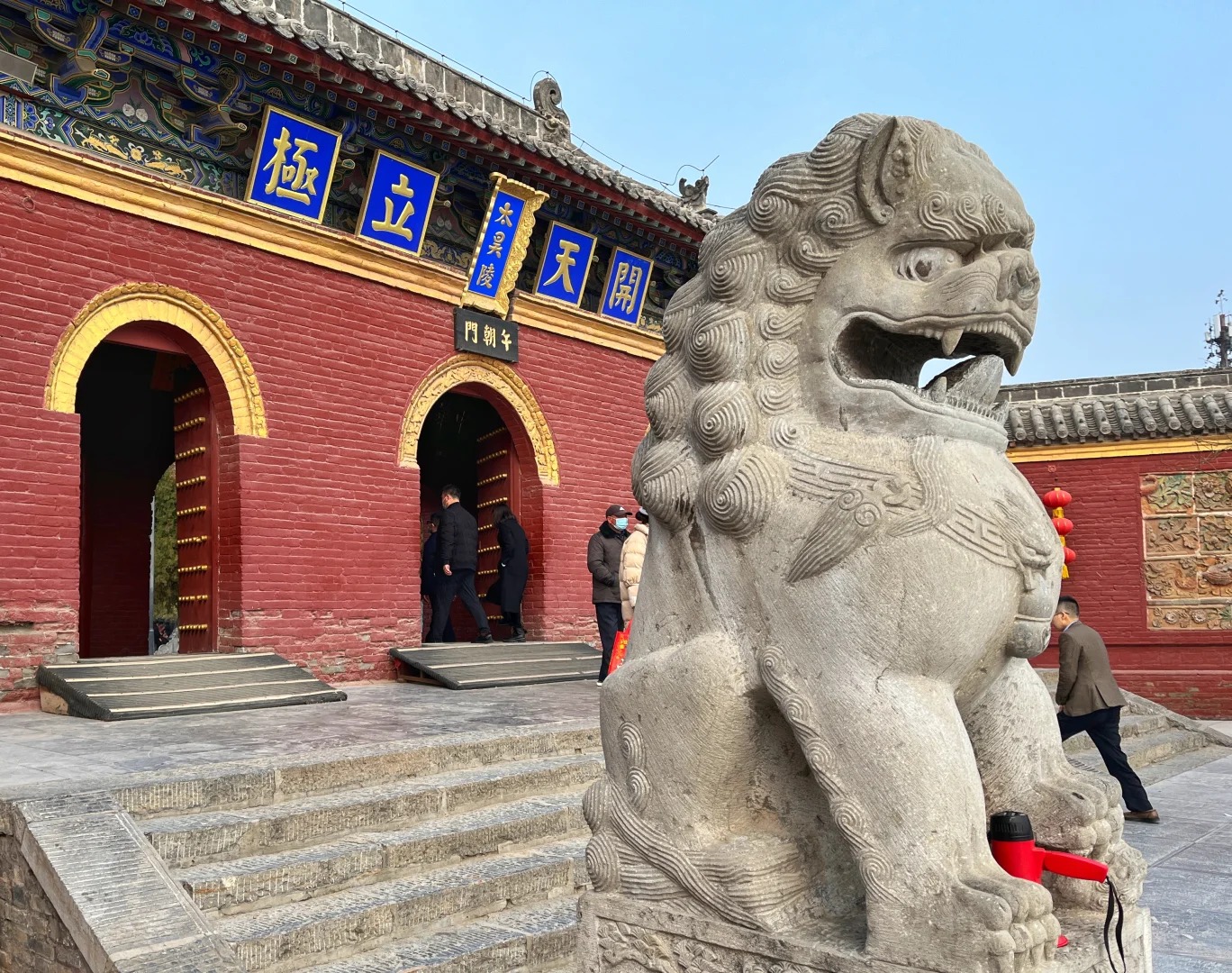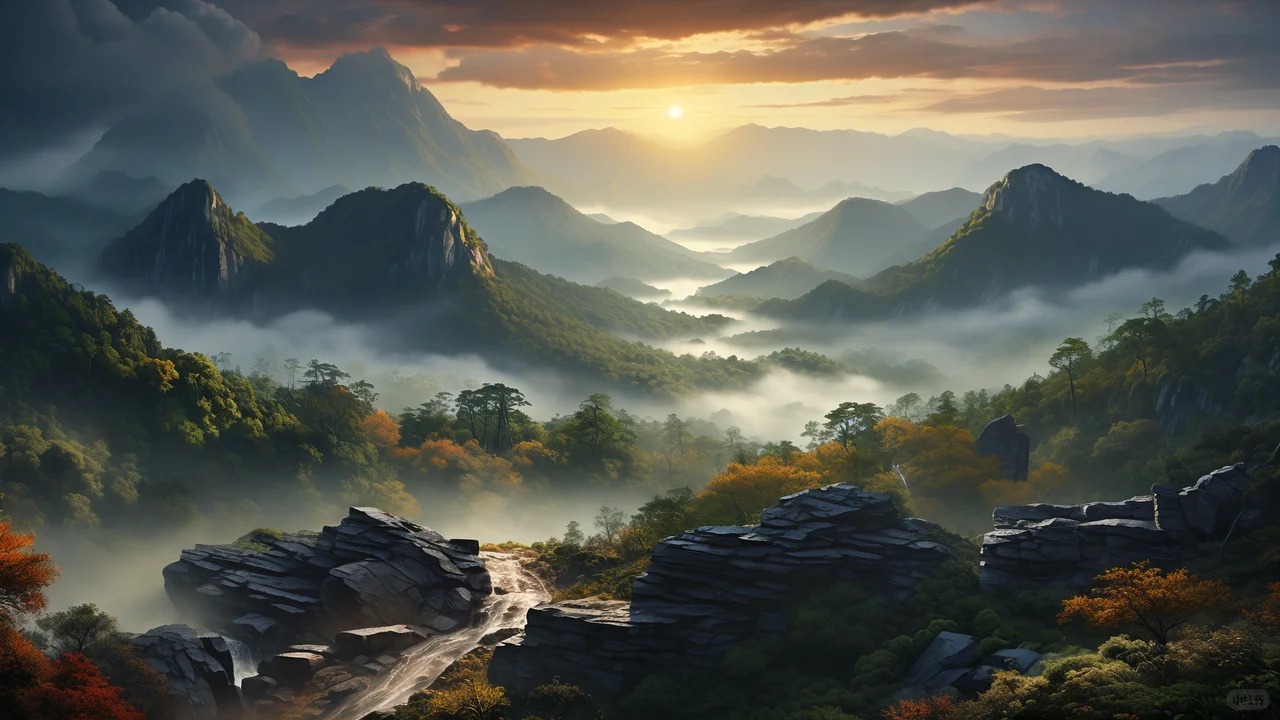Taihao Mausoleum
Historical Overview
The mausoleum’s origins trace to the Zhou Dynasty (1046–256 BCE), with expansions under later dynasties like the Han (206 BCE–220 CE) and Tang (618–907 CE). Fuxi, revered as the “God of the East” and the “First Human Emperor,” is credited with establishing the foundations of Chinese civilization, including marriage customs, music, and the I Ching (Book of Changes). Over millennia, the site witnessed imperial sacrifices, including those by Emperor Wu of Han and Emperor Taizong of Tang. In 1996, it was upgraded to a National AAAA-Level Tourist Attraction, blending historical reverence with modern accessibility. Key events include the 2006 Public Sacrifice Ceremony, which revived ancient rituals and drew global attention to Fuxi’s legacy.
Structural Layout
The mausoleum follows a symmetrical layout aligned with cosmic principles, symbolizing harmony between heaven and earth:
- Main Entrance (Lingxing Gate): A ceremonial gateway leading to the central axis.
- Statue Square: Features a 12-meter-tall bronze statue of Fuxi, surrounded by the Eight Trigrams.
- Taihao Temple (Main Hall): Houses a statue of Fuxi and his consort, Nüwa, with murals depicting their mythical achievements.
- Burial Mound: The final resting place of Fuxi, encircled by a 1,000-year-old cypress forest.
- Subsidiary Halls: Include the Hall of Divine Agriculture (for agricultural deities) and the Pavilion of Ancient Music (honoring Fuxi’s invention of music).
- Supporting Structures: The West and East Courtyards house exhibition halls, while the rear features the Imperial Stele Pavilion, inscribed with tributes from emperors.
Major Attractions
- Statue of Fuxi: A 12-meter bronze figure holding the Eight Trigrams, symbolizing his role as the father of Chinese philosophy.
- Burial Mound: A grass-covered tumulus believed to contain Fuxi’s remains, surrounded by ancient cypress trees said to be planted by Confucius.
- Taihao Temple: The central hall with intricate carvings of Fuxi’s inventions, including fishing nets and the first written characters.
- Pavilion of Ancient Music: Displays replicas of musical instruments attributed to Fuxi, such as the guqin (zither).
- Eight Trigrams Square: A circular plaza with stone carvings of the Eight Trigrams, used for ritual dances and meditations.
- Imperial Stele Pavilion: A Ming Dynasty stele praising Fuxi’s contributions, inscribed by Emperor Jiajing.
- Cypress Forest: A 1,000-year-old grove, including the “Confucius Cypress,” believed to be planted by the philosopher during his visit.
Suggested Itineraries
-
Classic Route (2–3 hours):
Lingxing Gate → Statue Square → Taihao Temple → Burial Mound → Eight Trigrams Square → Imperial Stele Pavilion → Exit.
Highlights: Core ancestral worship sites and Fuxi’s statue. -
Cultural Route (4–5 hours):
Lingxing Gate → Hall of Divine Agriculture → Pavilion of Ancient Music → Taihao Temple → Burial Mound → Cypress Forest → West Courtyard Exhibition Hall → Exit.
Highlights: Agricultural history, music, and ancient trees. -
Comprehensive Route (Full Day):
Lingxing Gate → All Classic Route sites → East Courtyard Exhibition Hall → Clock Tower → Folk Art Village → Evening Light Show (seasonal).
Highlights: In-depth exploration, including local culture and performances.
Ticket Purchase
- Online: Book via the official WeChat mini-program or travel platforms like Ctrip (up to 3 days in advance).
- On-Site: Tickets available at the entrance, but queues peak during Festivals.
- Prices:
- Peak Season (April–October): ¥80 (adults), ¥40 (students/seniors).
- Off-Season (November–March): ¥60 (adults), ¥30 (students/seniors).
- Free: Children under 1.2m, disabled visitors, and military personnel.
- Included: Access to all main halls, the burial mound, and temporary exhibitions.
Transportation
- By Train:
- Take a high-speed train to Zhoukou East Station, then a taxi (¥50, 40 minutes) to the mausoleum.
- By Bus:
- Long-distance buses from Zhengzhou Central Bus Station to Huaiyang County (¥30, 2 hours), then a local bus (¥5) to the site.
- By Car/Taxi:
- Direct drive from Zhengzhou (1.5 hours) or Luoyang (2.5 hours).
- Parking: Free parking lots available near the entrance.
Best Time & Tips
- Peak Hours: Avoid 10 AM–2 PM; visit early (8:30 AM opening) or late (after 3 PM).
- Crowds: Weekends and festivals (e.g., Fuxi Cultural Festival in March) are busiest; weekdays are quieter.
- Weather: spring (March–May) and autumn (September–November) offer mild temperatures and blooming flowers.
- Essentials:
- Wear comfortable shoes (the site spans large areas).
- Bring sunscreen and a hat in summer; layers in winter.
- Photography allowed (no flash in halls).
- Prohibited items: Large bags, drones, and selfie sticks.
- Guided tours available in English/Mandarin (¥100–200 per group).
Contact Us
What Our Clients Say?
Based on 10,000+ traveler reviews
















